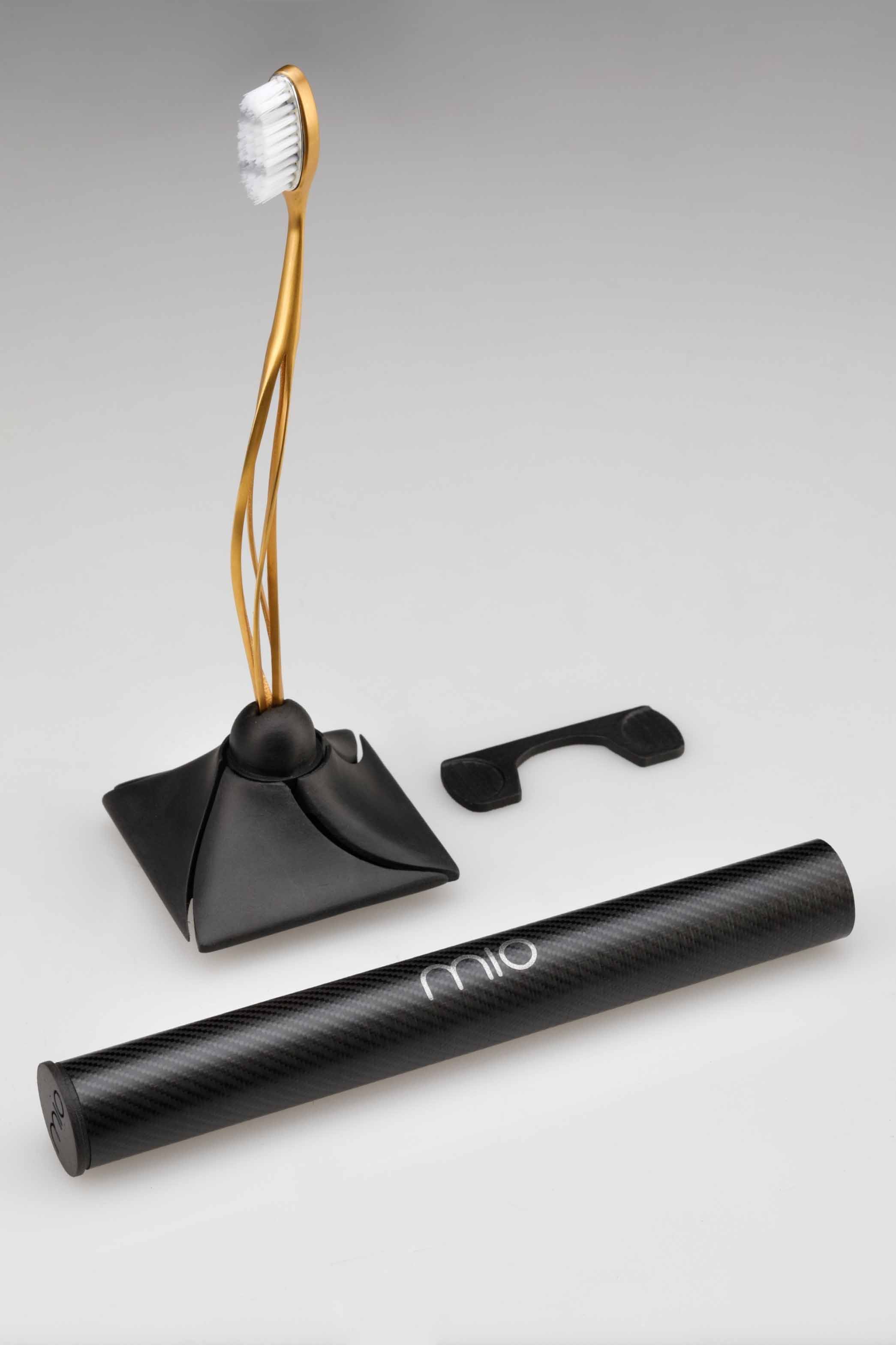
Lichtenfels (Germany), September 22, 2017: It’s common knowledge that Italian design is world-renowned. That Italian designers reinterpret virtually every object is no secret. Many of us are familiar with names like Alessi, Pininfarina or Colani. We think of cars with elegant lines, fine furniture and iconic household objects. Now, Zare from Boretto, Italy, has ventured to design a new toothbrush in collaboration with Nussbaumer Design, headed by Christoph Nussbaumer. The result is very unusual – this toothbrush is made from metal. Under the brand name MIO, this 3D-printed toothbrush featuring a timeless design is produced by means of additive manufacturing.
One of the technical strengths of 3D metal printing lies in its ability to redefine the function and geometry of products. So it’s hardly surprising that a 3D toothbrush made from metal has a different effect than a common toothbrush. And this holds true even though injection-molded toothbrushes made of plastic have been design objects or years now. When we buy a new toothbrush, today we can find ergonomic designs that combine customization and functionality, with colors and shapes that are intended to captivate us. Zare’s 3D metal toothbrush goes one step further.
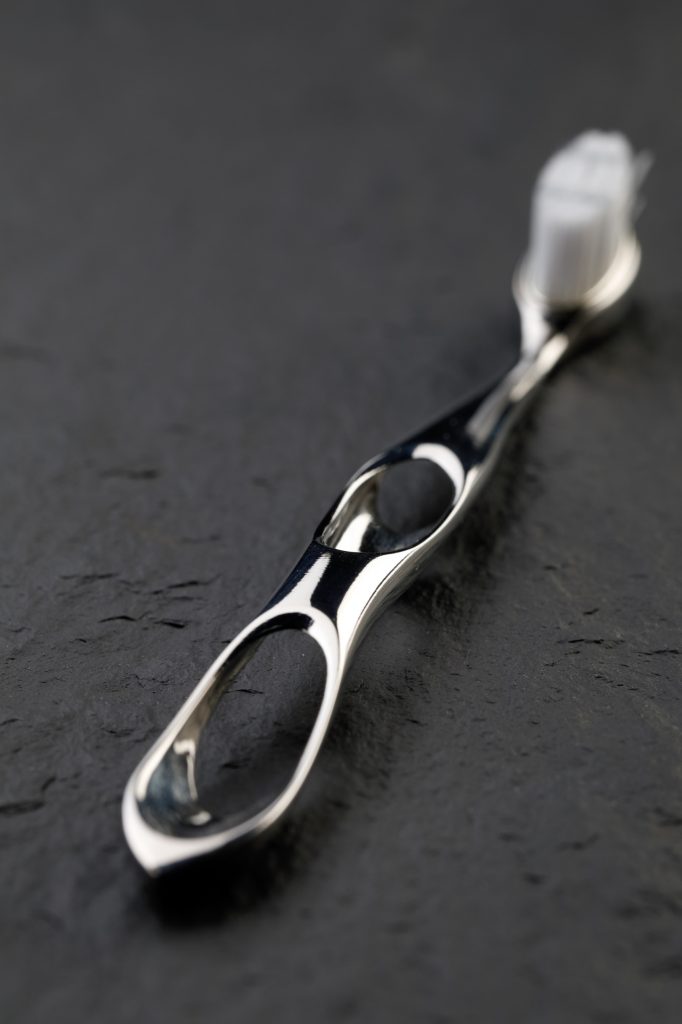
The story behind it all: Zare’s expansion into 3D technology
Andrea Pasquali, co-owner of Zare: “During the financial crisis of 2008 to 2010, as a service provider in prototyping and small batch production we looked for new business fields and production options. This is how we came across additive manufacturing and all the opportunities it brings along with it. We quickly saw what strengths this production technology could provide our customers in the aerospace industry, medical and dental technology, motor sport and the packaging industry over conventional processes. The advantages were clear – AM saves time and money. Products were available faster, without tools or up-front costs. It offers never before seen possibilities for designing components with custom functions and geometries. We refused to accept the general assertion that AM is too expensive – especially since it all depends on identifying the right parts for additive manufacturing. In 2009, we purchased our first 3D plastic printer.” Increasing demand for metal products showed Zare just how important 3D metal printing was becoming. They completed their first metal projects with a service provider. However, they quickly encountered obstacles, particularly in surface quality. In 2013, Zare procured its first 3D metal printer – an M2 cusing from Concept Laser. “For us, this was a logical step in entering the 3D world with metals. It enabled us to handle requests and orders independently, quickly and, above all, constructively. Today, our ratio of plastic to metal products is 40 to 60,” explains Andrea Pasquali. Thanks to the company’s experience with conventional machining techniques and plastic prototyping, Zare quickly realized the advantages of 3D metal printing, introducing its customers to the new possibilities.
Zare breaks the mold
Though Zare was already successful in 3D metal printing, the company never really had the idea to create a designer toothpaste made from metal. This was still the case in 2015 as Andrea Pasquali approached designer Christoph Nussbaumer, known to him from other projects, to work together in laying the foundation for another profit driver. Inspired by their joint love for flexible geometries, something AM technology entails, the two came up with a wide variety of ideas. The objective was to take a normal object of daily use and create a luxury item not yet available that could only be created using additive manufacturing based on its design. In the end, they went with their gut, choosing a “customizable” toothbrush made from metal. The production costs didn’t play a decisive role, the focus instead placed on a unique design, exclusivity and user friendliness, in this case ergonomics. At Zare, a company originally from the prototyping sector, these dependencies were ground for a new approach. Why not produce 3D printed toothbrushes made from stainless steel or titanium? Both materials are standard in the dental industry and certified for oral use. Stainless steel 316L is common in dental technology. Titanium is biocompatible and particularly attractive for those with allergies to other materials. And both materials exude the sought value and exclusivity. The logical deduction: both materials are perfect for producing the envisioned design. Experience also promised that an M2 cusing Multilaser from Concept Laser would achieve an excellent surface quality. Particularly in the oral cavity, a very sensitive area, end products must have a perfect surface quality. This is why the toothbrushes are finished manually to ensure perfect results and maximum user comfort.
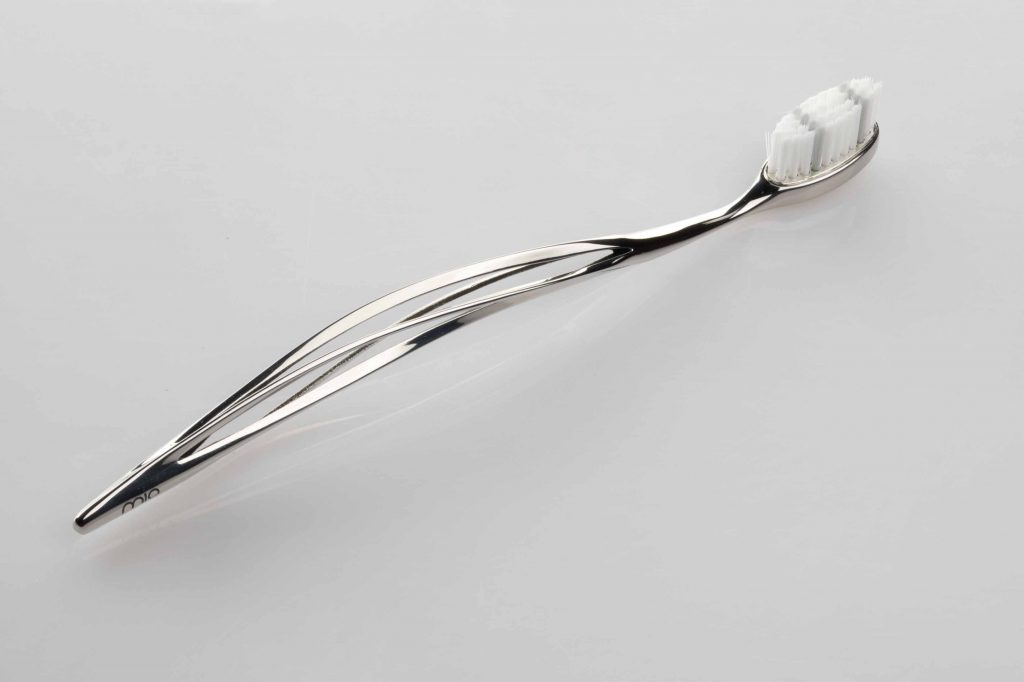
Designer Christoph Nussbaumer on the initial project phase
After earning a degree in design in Italy, Austrian designer Christoph Nussbaumer began working for international design agencies in Salzburg (A), Milan (I) and Boston (USA). As the head of a very successful design agency established by Nussbaumer himself in Novellara, Italy, with a team consisting of designers and engineers, Nussbaumer has received over 100 design and industry awards. His strengths include applied ergonomics, biomechanics in sports and branding. Christoph Nussbaumer on the origin of the 3D-printed toothbrush: “I still remember when Andrea Pasquali and I met in my office the first time regarding a new project. We reflected on a product that could highlight the extreme, formal design freedom afforded by additive manufacturing. We assessed possible products, such as bicycles, lamps and jewelry. We contemplated jewelry, a skilled art in every phase, from conception, to production to finishing. On the other hand, we knew that we wanted to create a product that served a function. A product used every day, like a toothbrush. Useful, exclusive and not too extravagant – after all, a toothbrush is not your typical status symbol. Ultimately, we transformed a common object into a valuable, personalized jewel that accompanies its owner every day, but still remains timeless.”
Individuality combined with a strong brand name
After around half a year, the team decided on two design variants, each available in both right-handed and left-handed versions as well as in two different materials (stainless steel 316L and titanium). Both design versions are patented. Each toothbrush has a serial number and can be customized. However each version can even be ordered with a matte, polished or galvanized surface finish or in original MioRaw® for those who want an object with less alterations and as close as possible to the additive matter. With its ergonomic design and changeable brush head made from silver, the 3D printed toothbrush is extremely durable, customizable and marks a new level of value in terms of its look and feel. This is emphasized by the premium packaging the entire set is supplied in, which is also produced using 3D plastic printing. But this new product from the consumer goods segment also requires a new marketing strategy with its own brand name to break the association of a producer and marketer with the established profile of a service provider. The idea for the brand was the name “MIO”, meaning “my” in English. Not an unusual choice for a customizable luxury product. The product has been announced at www.mioitaly.com and sales are set to begin on September 1. If the market launch is successful, Zare will consider expanding the “MIO” brand to include additional additive produced luxury products in the future. In any case, Zare’s “gut decision” has shown one thing for sure: 3D metal printing is about transforming creative design and geometry into new products and functions.
Concept Laser at Zare
As Zare entered the 3D metal printing market in 2013, they wanted to avoid any negative experiences with service providers regarding quality and product surfaces. Zare found just the system manufacturer it was looking for in Concept Laser’s Italian sales partner Ridix. The positive experiences made with the initial investment into a Concept Laser M2 in 2013 lead to them purchasing an Mlab cusing R. This was soon followed by three additional M2 cusing Multilaser units and finally one X LINE 2000R unit to be able to offer very large components.
Right from the start, the M2 cusing worked wonders for Zare. The excellent handling properties thanks to the Concept Laser-typical separation of the process stage and handling stage received great praise, above all the safety aspects, with reactive titanium being used. Andrea Pasquali: “For us, the change of materials was a surprise. On other machines, material changes took a very long time and were complicated, even though they weren’t uncommon for us. If we wanted to be flexible in production, Concept Laser machines were our only choice for efficient changes of material. The LaserCUSING machines are much easier to use and offer us greater flexibility and reliability than other machines we are aware of.” But Concept Laser also impressed Zare in other areas of process technology, such as surface quality. The original service providers regularly delivered suboptimal results. This situation was already much improved on the first M2 cusing from Concept Laser. Enhancements to the already excellent surface quality were achieved by switching to 3D. Increased flexibility thanks to the variable laser spot setting also proved to be highly advantageous. The newest three Multilaser machines from Concept Laser have increased productivity significantly. Andrea Pasquali: “The M2 cusing Multilaser brings our set-up speeds to a whole new level. Depending on the component geometry and material, we have seen an increase in productivity by 30-40%.”
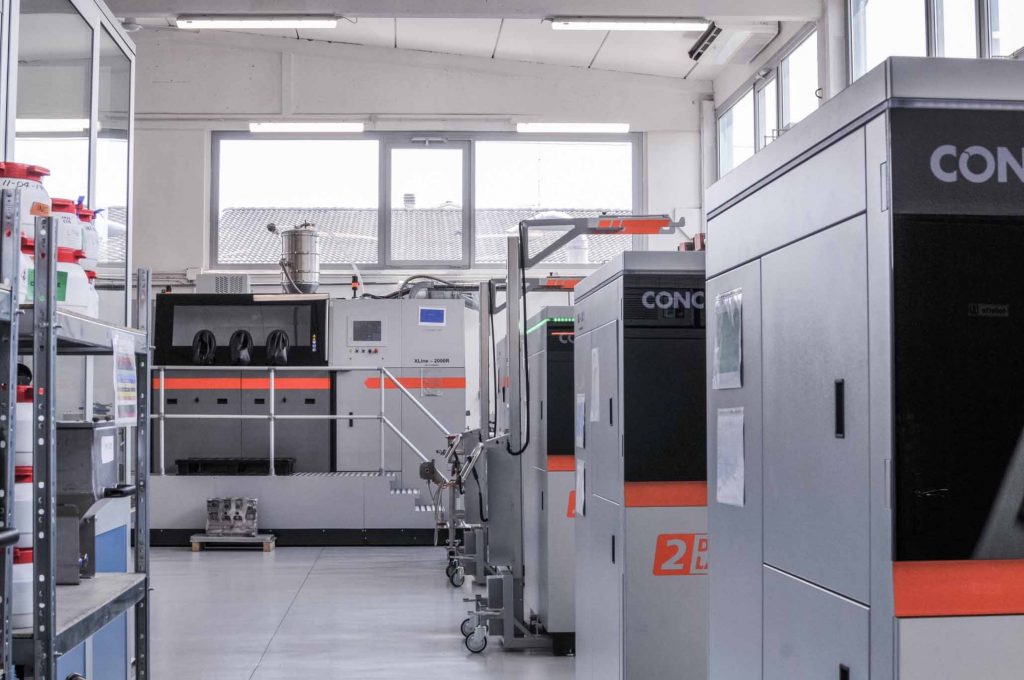
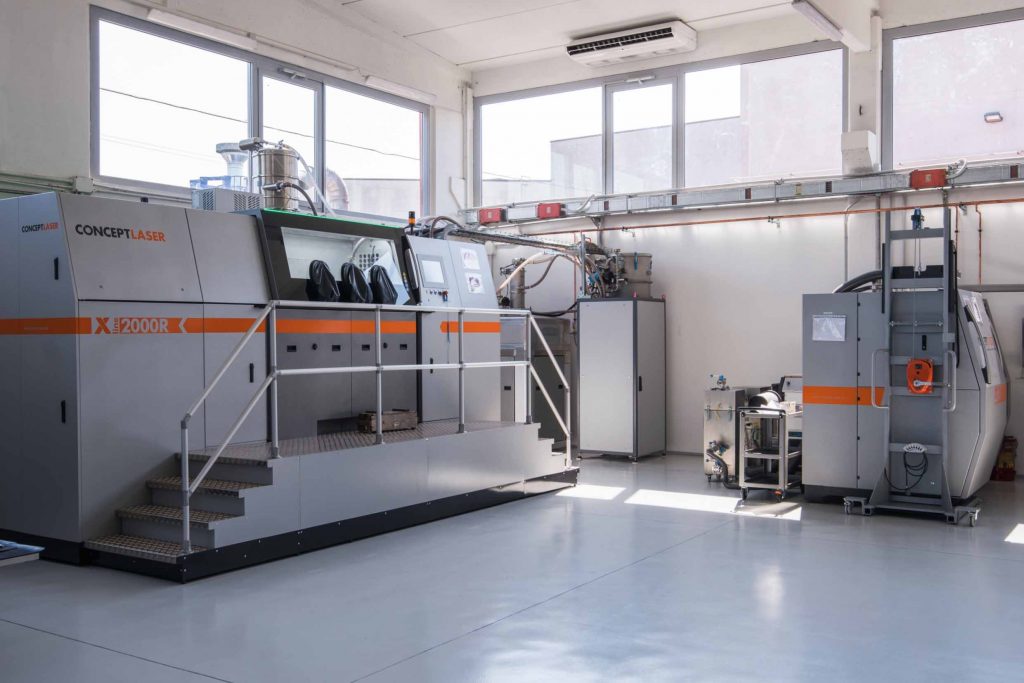
Verdict
With the “MIO” brand, product service provider Zare is evolving into a manufacturer with its own branding and brand concept, giving the company a second profit driver. In any case, Zare’s gut decision to produce the “pro MIO” has shown one thing for sure: 3D metal printing is about transforming creative design and geometry into new products and functions with flexible production. Andrea Pasquali: “For us at Zare, additive manufacturing means one thing: We can remodel every product with a more creative design.”
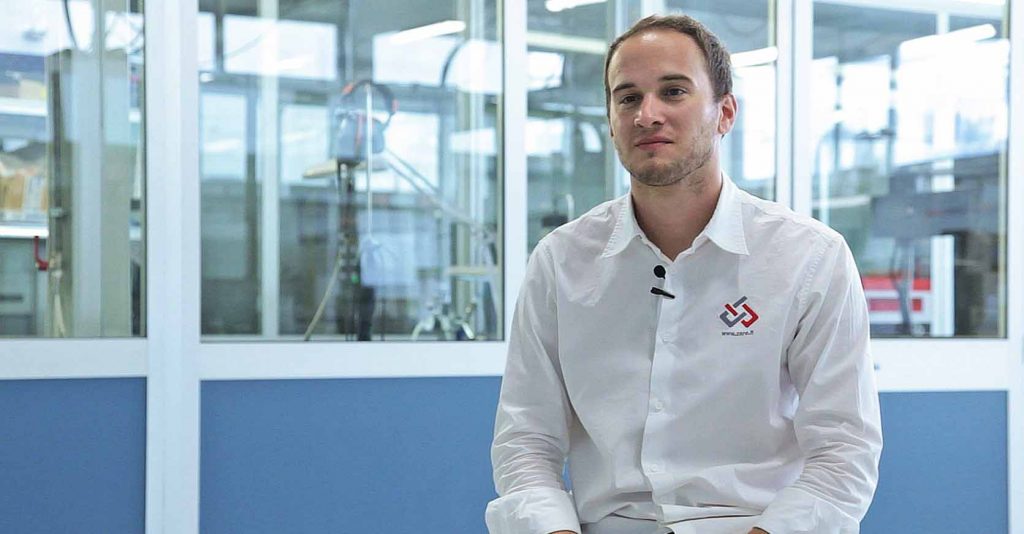
The 3D-printed toothbrush under the brand name “MIO”
All pictures courtesy of Concept Laser
Press Release from Concept Laser